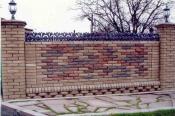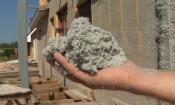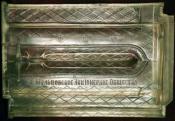Search
Login
Recommended
Damp in the house
The dampness in the room leads to fungal infections of the elements of the structure, so it is necessary to eliminate the source of the problem until wet and dry rot appears.
Content
- Types of dampness video
- Penetrating moisture
- Rising damp
- Causes and signs of penetrating dampness
- Ways to eliminate penetrating moisture
- Causes and signs of rising dampness
- Ways to eliminate rising dampness
Types of dampness
Often, one form of dampness can be masked by another, so knowledge of the main categories of dampness is needed. Dampness is penetrating and rising.
Penetrating moisture
As a result of leakage of moisture from the outside through the structural elements of the building, penetrating moisture appears.
Dampness appears only in rain or immediately after it, later on, during several dry days, wet spots disappear, often leaving smudges.
Due to the large accumulation of water in one place, leaks appear.
Rising damp
Rising dampness comes from the soil, if the waterproofing pad in the walls, or the waterproofing layer in the floor is damaged, then water can rise to the upper parts of the structure.
The second reason may be the so-called bridge through the waterproofing strip, or the waterproofing layer, through which water passes the waterproof barrier and rises from the ground into the walls.
This dampness threatens the lower parts of the walls and monolithic floors, later it appears as dampness on the walls, in the bathroom, in all parts of the house there is a smell of dampness.
This problem, if the cause is not eliminated, exists even in dry weather and worsens in rainy weather.
Causes and signs of penetrating dampness
- broken or clogged mud pipes lead to leaks over the wall and a leak appears as a wet spot, often in the middle of the height of the wall near the ceiling, sometimes mold and smell of dampness appear behind the drain pipe;
- damage to the roofing, manifested in the form of wet spots on the ceilings of the upper floor, often after heavy rains;
- in cases of connecting the roofs of the extension and the walls of the house, or pipes and roofs - these places are equipped with ebbs (drains), if cracks appear in these places, water penetrates inside. In this case, a wet spot appears on the ceiling or on the side wall near the junction with the extension, or around the pipe;
- over time, the seams of the brickwork crack, then water can penetrate inside, this leads to wet spots on the walls, the smell of dampness in the room, dampness sometimes spreads widely throughout the room;
- over time, the old bricks become porous, the walls are saturated with moisture, as a result, dampness spreads widely on the inner surface of the outer walls, especially during showers, mold appears on the internal plaster and finish;
- as a result of the shrinkage of the foundation, cracks appear in the brick wall, which allows water to seep inside, the dampness manifests itself in the form of individual wet spots;
- due to defects in the external plaster, moisture seeps between the plaster and the masonry, it is absorbed into the wall. Dampness manifests itself in the form of a separate, wet spot, it can spread widely and persist for several days after rain;
- if the crest of the wall (upper row of masonry) is damaged - water penetrates the wall, manifests itself in the form of wet spots on the ceiling near the wall;
- if a teardrop is blocked (a groove running at the bottom of the window sill parallel to the wall, water flowing under the window sill, flows down the teardrop and does not reach the wall), water enters the wall. Wet spots appear under the window frame, rot develops on the wooden windowsill inside and out, mold develops under the window on the inner surface of the wall;
- often wooden boxes shrink, sealing of window and door openings is violated, rainwater enters the gap. Rot and wet spots appear around the boxes;
- in the absence of ebb under the door, when water is not diverted from the threshold, rot appears at the bottom of the door frame, inside the doorway the floorboards are always wet;
- in the event of a jumper in the cavity of the wall (the solution accidentally enters the screed that connects the outer and inner walls of the strip wall), water penetrates the cavity. After a heavy rainfall, a separately located wet spot appears.
Ways to eliminate penetrating moisture
Having ascertained the causes of penetrating dampness, knowing their signs, it is necessary to eliminate them, namely:
- repair and clean the drainpipes;
- repair or replace the defective roof;
- in case of damage to the drain, replace or seal it;
- make a new jointing of the masonry, treat the entire wall with a water-repellent composition;
- repair defective bricks, cover the outer surface of the walls with a water-repellent composition;
- repair cracks in the joints, replace damaged bricks;
- strengthen the masonry, putty in the cracks, remove the damaged or swollen plaster, put a patch from a new cement-sand mortar, then paint the walls with paint for external use;
- restore the crest of the wall, laying new stones on a fresh mortar and close the seams;
- clean the slug, additionally, to the bottom surface of the wooden windowsill, nail the rail to drain the water;
- repair the window or door frame, seal it around the perimeter with mastic, also seal the gaps around the PVC windows;
- Be sure to install a tide under the front door, replace rotten wood;
- open the wall and remove the bridge from the solution.
Causes and signs of rising dampness
Walls can absorb moisture from the ground if the building was built without a waterproofing pad or waterproofing layer. The result of this error is extensive dampness in the house, dampness rises to 1 meter above the baseboard, constantly smells of dampness, dampness everywhere on the walls and even the concrete floor becomes wet;
- if the waterproofing pad or waterproofing layer is broken, i.e. the waterproofing is spoiled, water penetrates in the places of damage, dampness appears in the building at the level of the plinth, it can be sections, but sections gradually spread;
- the construction rules regulate the installation of waterproofing gaskets to a height of at least 150 mm. above the ground, if the gasket is installed lower, in case of heavy rain, water can overlap through it and soak into the surface of the walls. Dampness appears at the level of the plinth in those places where there is a high level of soil;
- if the outer plaster is broken below the waterproofing strip or the solution gets inside the strip wall, thereby creating a bridge - moisture can pass inside. As a result of this defect, there is extensive dampness at the level of the plinth and directly above it;
- foreign objects near the wall, in the form of a flower bed, rockery, paved paths, can allow moisture to enter the room, bypassing the waterproofing pads. In places of this area of \u200b\u200bthe bridge for moisture, dampness appears at the level of the plinth, gradually spreading from this place.
Ways to eliminate rising dampness
To eliminate rising dampness, depending on the cause, the following steps must be taken:
- if necessary, make a new waterproofing, for this, consult with specialists, they will tell you modern methods of application or the installation of a waterproofing layer;
- it is necessary to repair or replace the waterproofing;
- it is necessary to lower the ground level at the outer wall, for this, dig a groove 150 mm wide. and cover it with gravel as drainage so that the water quickly leaves;
- remove the outer plaster to expose the waterproofing pad, remove the solution that creates the moisture bridge;
- remove the earth, paving slabs from the wall, allow the wall to dry naturally.





